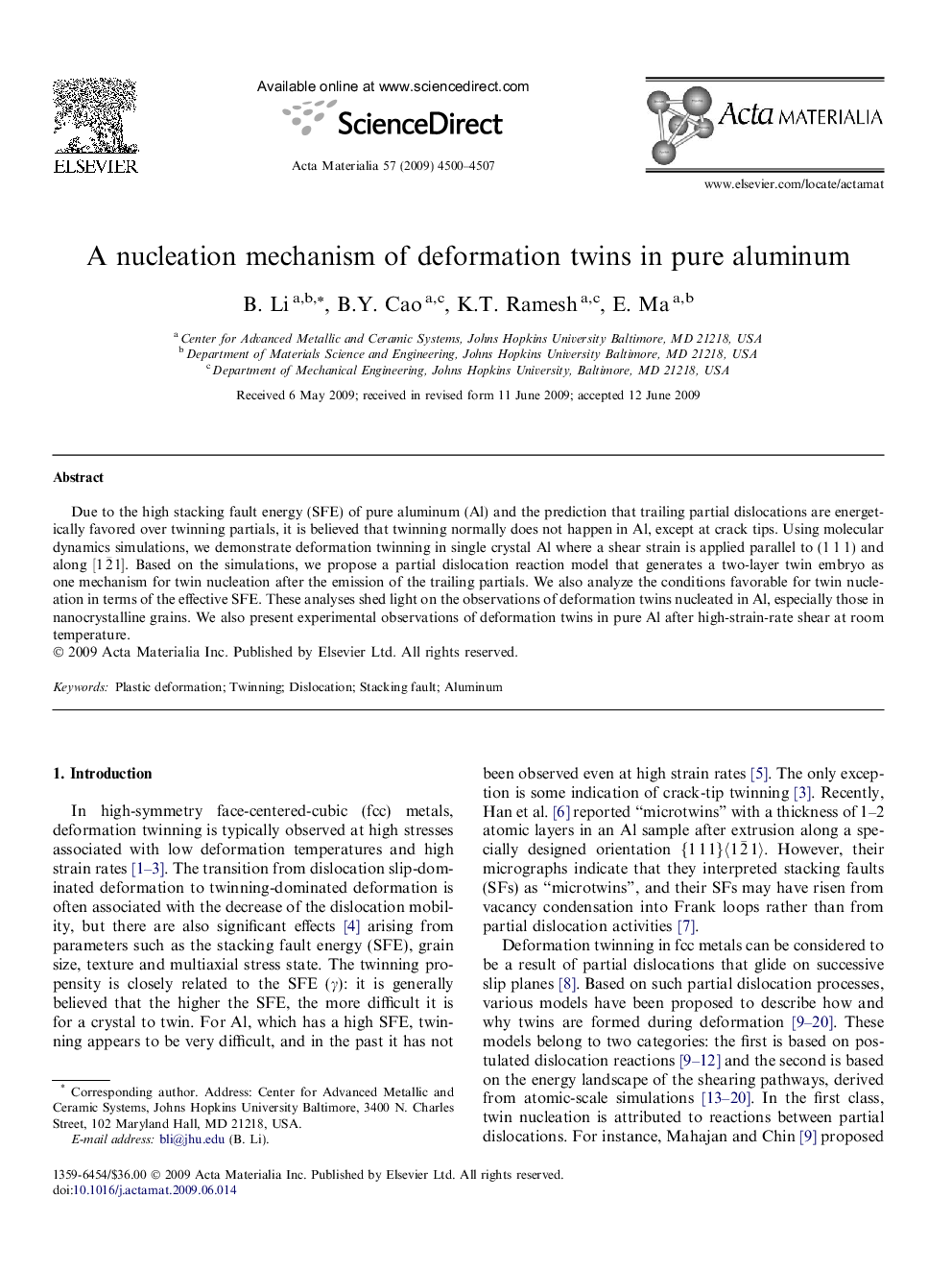| Article ID | Journal | Published Year | Pages | File Type |
|---|---|---|---|---|
| 1449289 | Acta Materialia | 2009 | 8 Pages |
Due to the high stacking fault energy (SFE) of pure aluminum (Al) and the prediction that trailing partial dislocations are energetically favored over twinning partials, it is believed that twinning normally does not happen in Al, except at crack tips. Using molecular dynamics simulations, we demonstrate deformation twinning in single crystal Al where a shear strain is applied parallel to (1 1 1) and along [12¯1]. Based on the simulations, we propose a partial dislocation reaction model that generates a two-layer twin embryo as one mechanism for twin nucleation after the emission of the trailing partials. We also analyze the conditions favorable for twin nucleation in terms of the effective SFE. These analyses shed light on the observations of deformation twins nucleated in Al, especially those in nanocrystalline grains. We also present experimental observations of deformation twins in pure Al after high-strain-rate shear at room temperature.
